ANCIENT GREEK 'PLASTIC VASES'
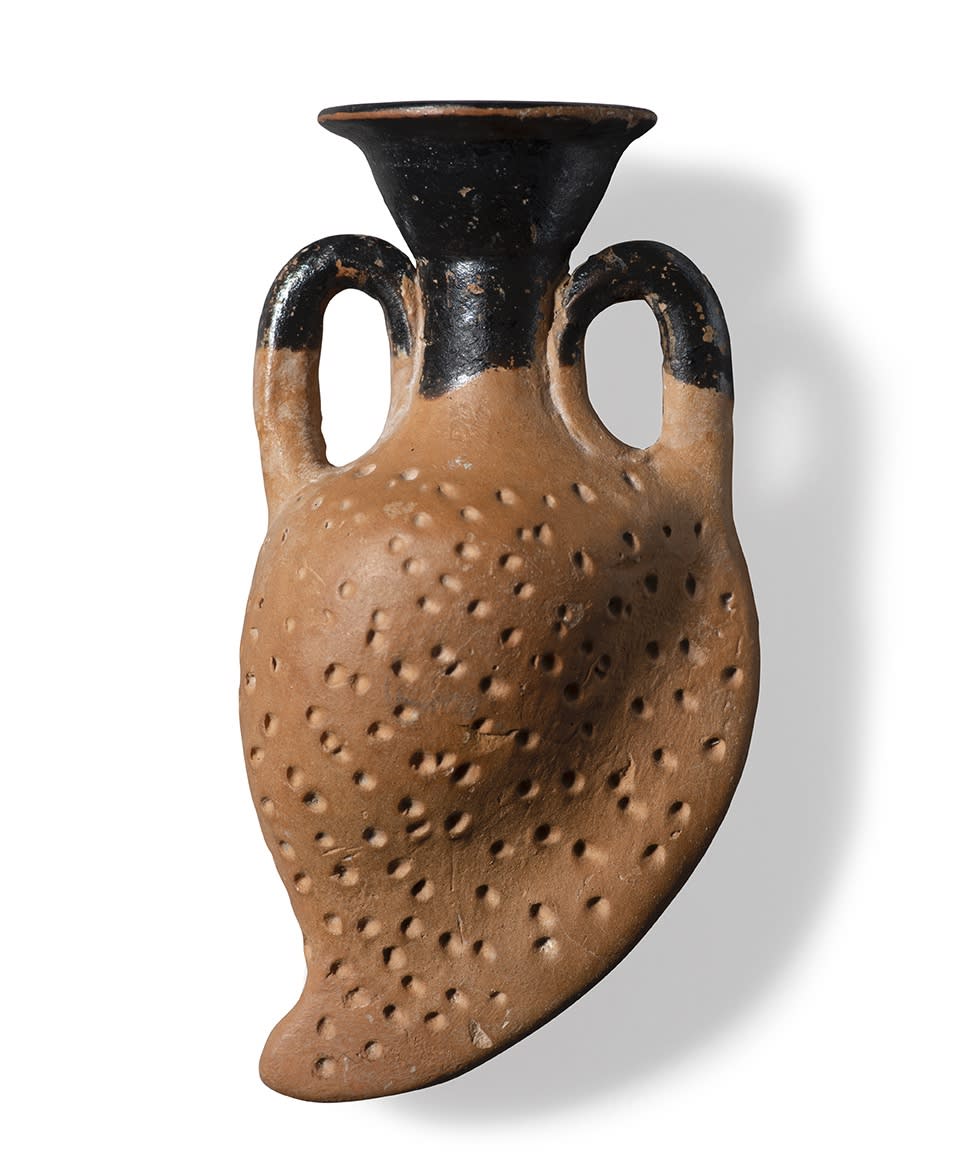
‘Plastic vases’ are vessels made in figural shapes such as human, animal, fruit, or mythological beings. Their name derives from the Greek verb plassein meaning ‘to mould’. The earliest plastic vases were thrown on the wheel and then modelled after by hand. However, from around 600 BC most were made in two moulds, one for the front and the other for the back. The resulting products were then joined together and worked over. These vessels were especially popular in the Greek world during the middle of the 7th century BC to the mid 6th century BC.
The shaping of a vase into a figural form is a fascinating ancient practice with its origins in the earliest artworks of Mediterranean cultures, and one that already existed in the Minoan and Mycenaean periods.
During the Archaic period the form became extremely popular with the East Greek island of Rhodes emerging as the leading manufacturer of plastic vases. However they were also made on the mainland most notably at Corinth, and later at Athens.
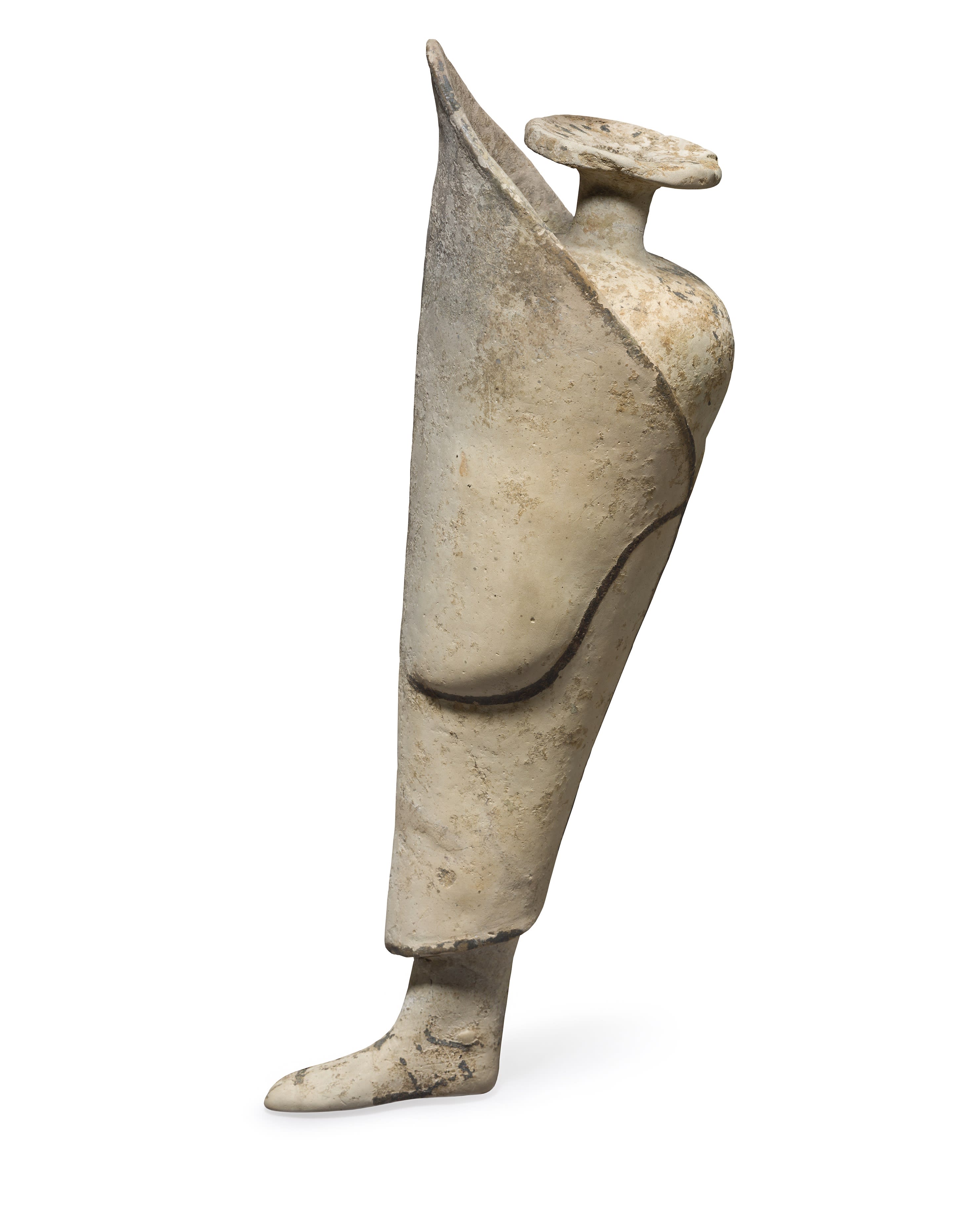
A GREEK POTTERY ALABASTRON IN THE FORM OF A GREAVED LEG
Corinth or Rhodes, circa 6th century BC
Corinthian workshops had been producing figural vases since the Protocorinthian period, and vessels in the form of humans and animals were widely distributed throughout the Greek world and the Mediterranean. This distribution and their use as containers for luxury perfumed and precious oils, suggests that they were a high status object and were appreciated and pursued by wealthier members of society.
The Kallos example above is a very rare and fine alabastron that takes the shape of a leg protected by a greave. Dating to the 6th century BC, it is an interesting example of a plastic vase from this period. The greave is outlined in black slip and tapers towards the ankle area. The foot emerges beneath with carefully incised details for the sandal and toes. Although primarily used as a container, the form of this alabastron as a greaved leg implies that it may also have been used at or dedicated to a sanctuary as a votive offering. There is a very similar example of this rare type in the Museu da Farmácia, Portugal, inv. no. 10892.
The first Attic plastic vases follow on from the tradition established by Rhodian and Corinthian potters who produced small aryballoi in the shape of animal or human heads. Some flasks were still used as small containers for expensive oils, such as the little almond amphoriskos in which the form clearly advertises its contents of almond oil. However, it is likely that the majority of Athenian plastic vases were used in a symposium setting as a novelty item related to wine drinking.
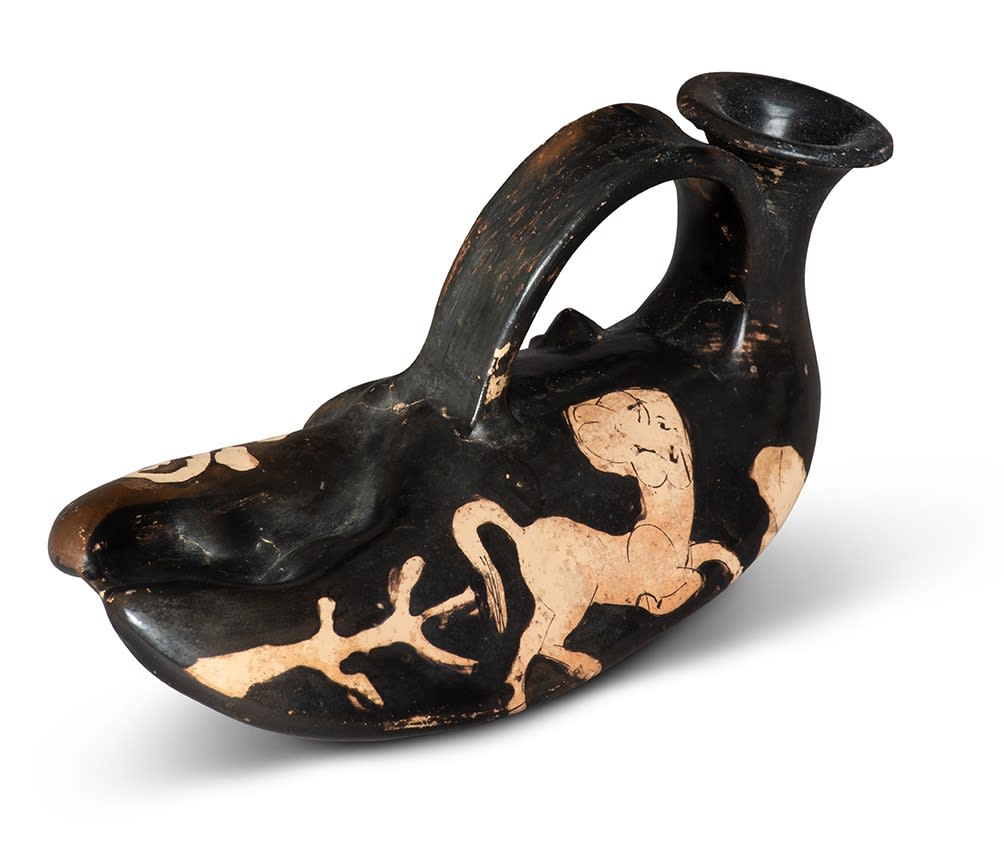
AN ATTIC RED-FIGURE LOBSTER CLAW ASKOS
Late 5th century BC
One such example is the Kallos Attic red-figure lobster claw askos. The sea was of immense importance in Greek life so a vase in the shape of a lobster claw is hardly surprising. Such a form however, is extremely rare. This piece is a variant of the Athenian askos, which was a small round vessel with a flat bottom and overarching handle. The word askos refers to the animal-skin bags used to carry wine, which were often depicted in the arms of satyrs on Athenian red-figure vases, providing a link to the Dionysiac iconography frequently found on vases used at symposia. This lobster claw askos is one of only nine such known vessels and is related to the group identified by Beazley as The Class of the Seven Lobster-Claws.
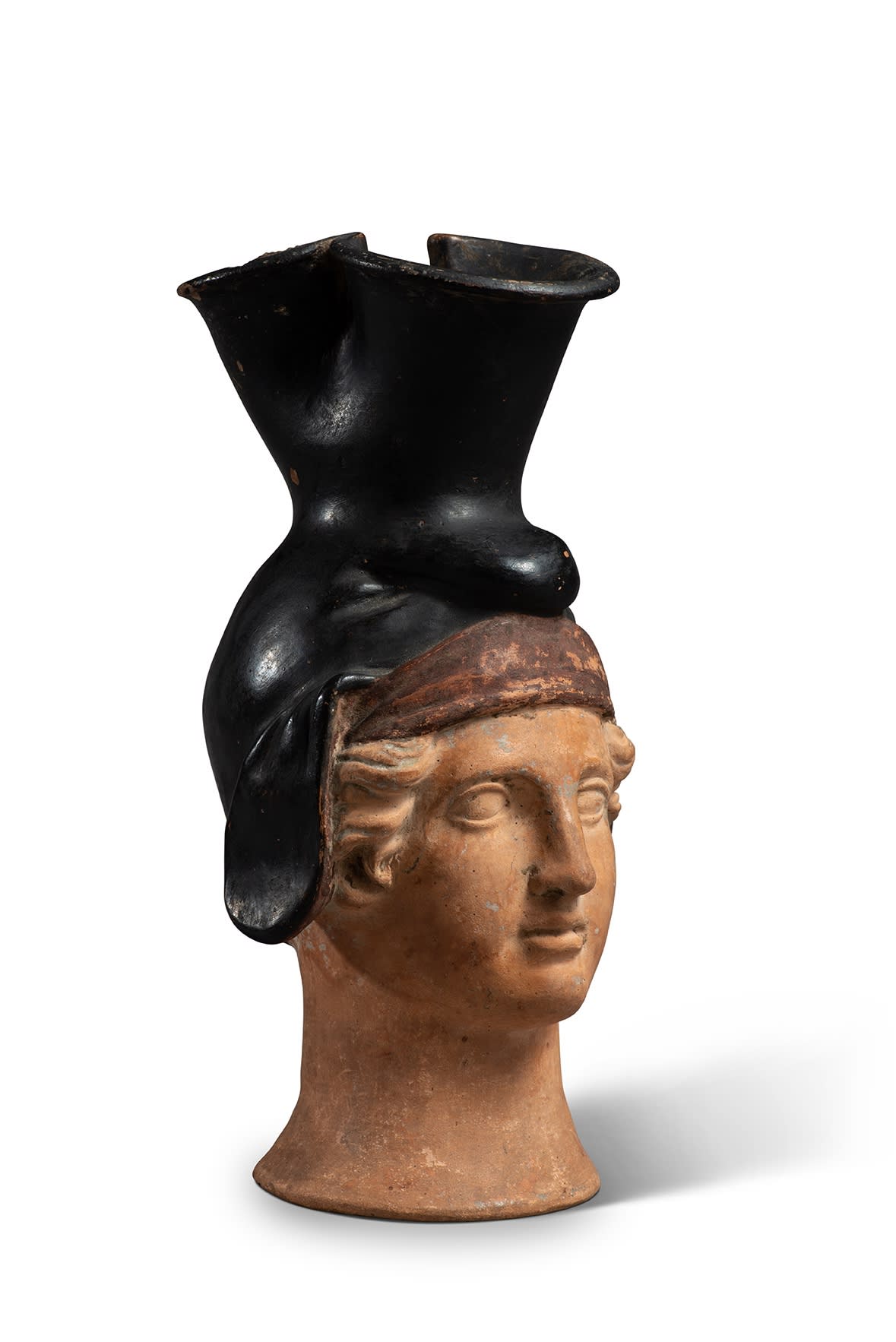
A GREEK POTTERY OINOCHOE IN THE FORM OF AN AMAZON'S HEAD
Apulian, circa 4th century BC
Another form of the ‘plastic vase’ was the ‘head vase’, a vessel modelled in the shape of a male or female head. This genre was especially popular in Athens during the early 5th century BC with potters of the Charinos Class producing sculpturally beautiful examples. The form dies out for a time, but in around 400 BC the head vase revives in ancient Greece. The Castle Ashby Amazon belongs to a small group of Greek vases in the form of heads that begin to appear at this time. The subject in the form of an Amazon's head is distinctive due to the Phrygian style head wear, a soft conical cap with characteristic earflaps and a loose fold bent over at the apex.
The most frequent shape of head vase is the oinochoe, and the most common subject is by far the head of a woman. Given the use of such vessels in the symposium, the choice of a female subject may be related to their role as wine pourers. Lissarrague in his important essay, 'Identity and Otherness: The Case of Attic Head Vases and Plastic Vases', Notes in the History of Art, vol. 15, no. 1, 1995, pp. 4–9, suggests that in such cases the woman as servant becomes the vase itself as the object assimilates her human function.

AN ATTIC POTTERY LEKYTHOS FRAGMENT
IN THE FORM OF A FEMALE HEAD
Circa 4th century BC
In Athens, it is fascinating that the head vase rarely depicted an Athenian male subject, a citizen. They predominantly depicted satyrs, women, and barbarian heads. When used in the symposium it may be seen that this allowed the Greek drinker to come face to face with forms of ‘otherness’ that took him outside of his masculine universe, yet within a traditional drinking setting limited to Athenian male citizens alone. This reminds us of the words of Thales when he said he was grateful to Fortune for three things:
‘first, that I was born a human being and not one of the brutes; next, that I was born a man and not a woman; thirdly, a Greek and not barbarian’
Diogenes Laertius, The Lives and Opinions of Eminent Philosophers, I.34.
The Getty Museum have produced an insightful and helpful video demonstrating how these vases were made, which illustrates how much precision and time must have gone into their making.
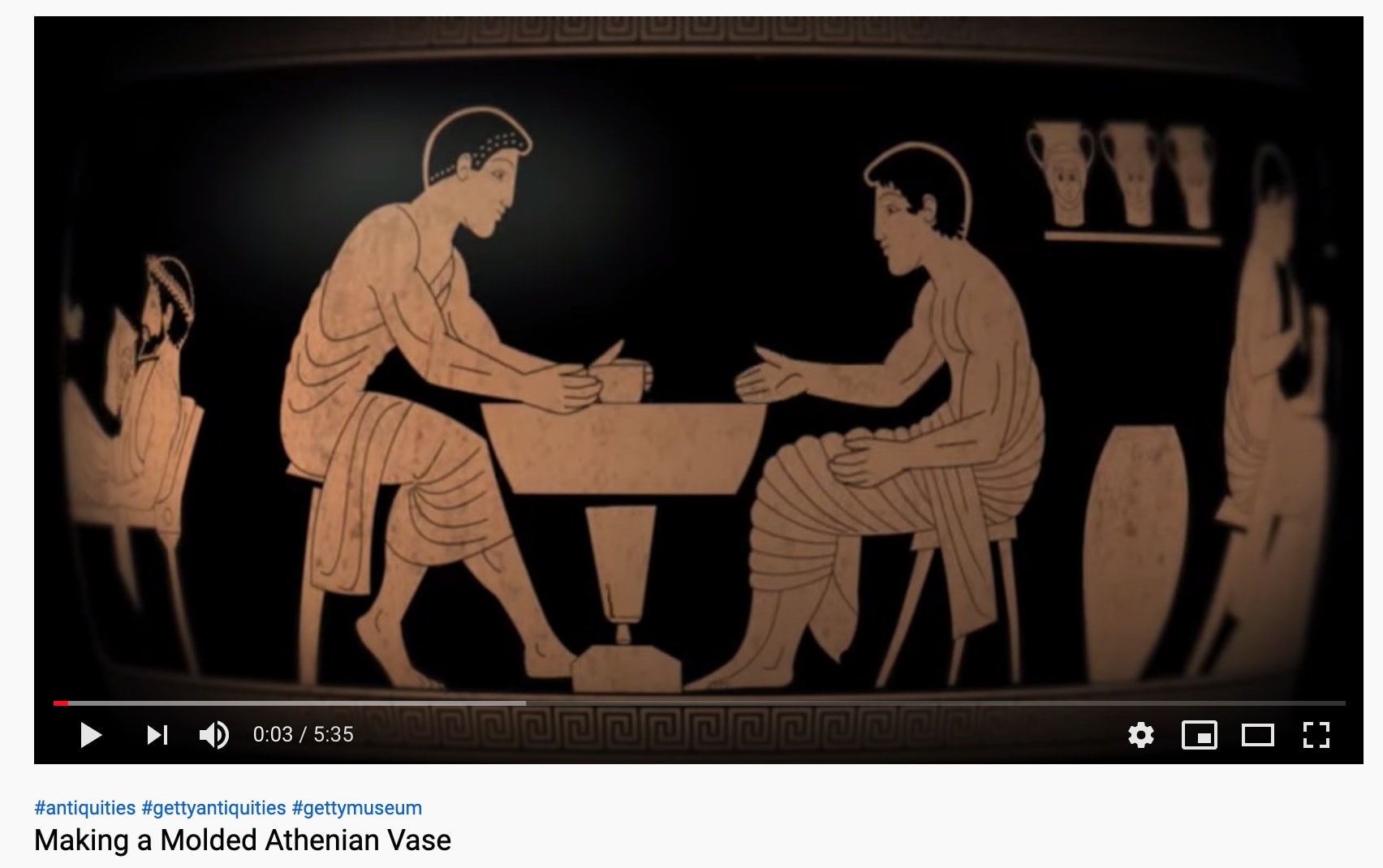
https://www.youtube.com/watch?v=hHC8COp_r_g